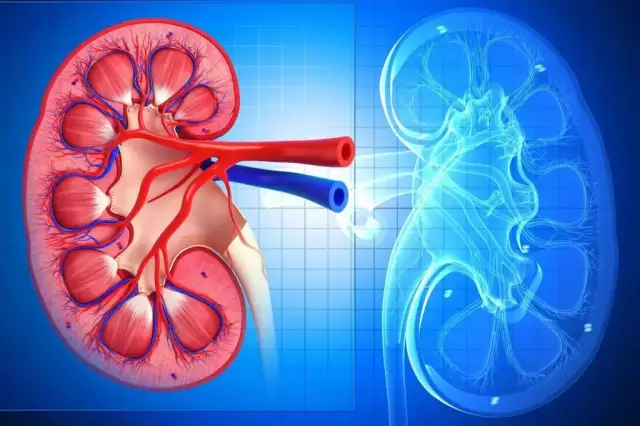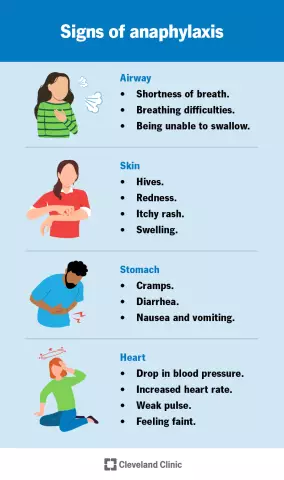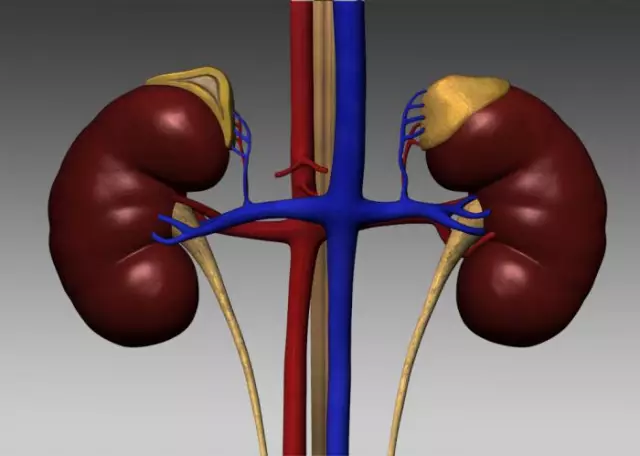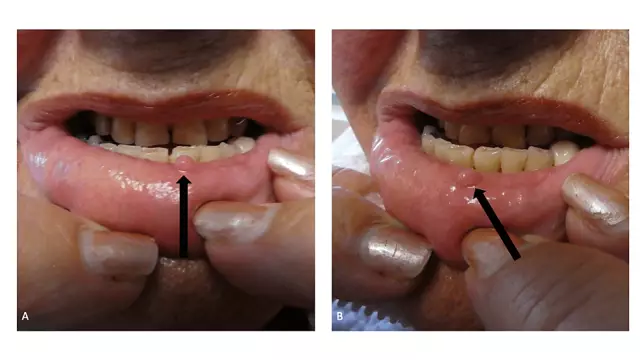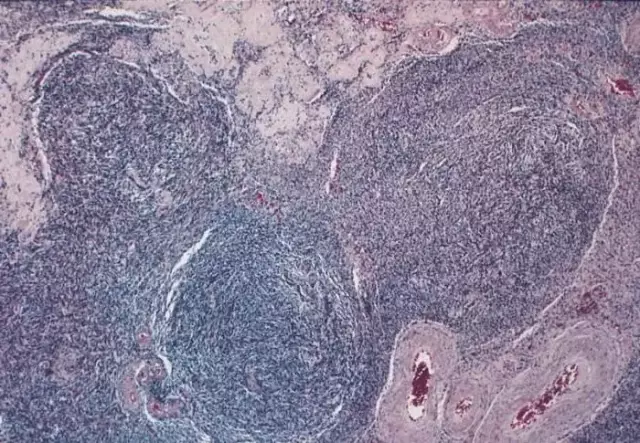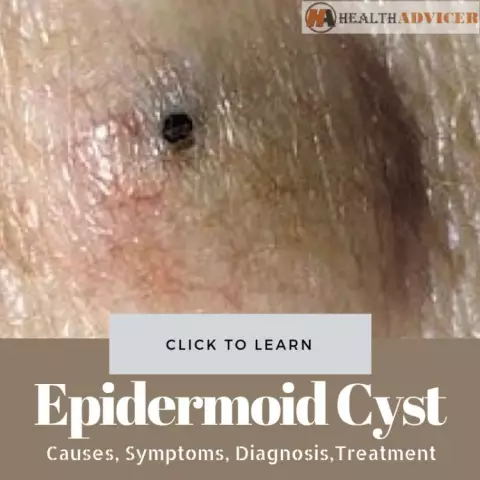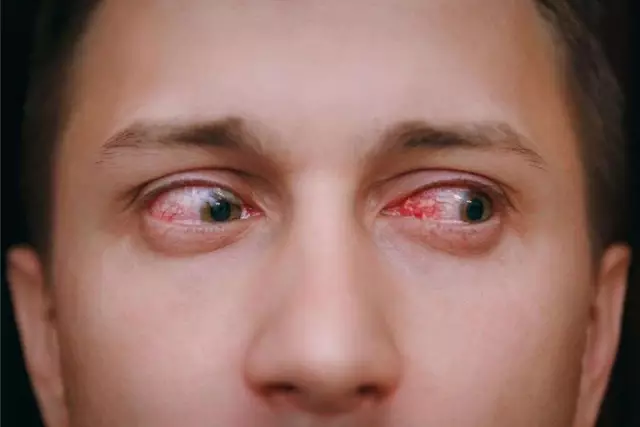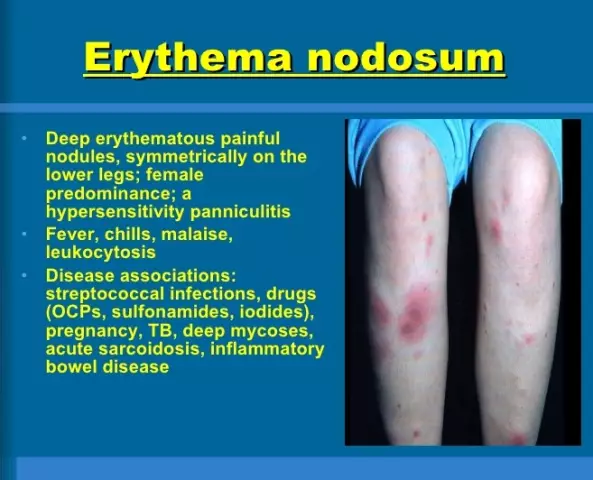Diseases
Last modified: 2025-11-02 20:11
Cholera is an acute intestinal infection caused by bacteria. As a rule, it spreads in the form of epidemics. Throughout history, humanity has suffered from devastating outbreaks of cholera
Last modified: 2025-11-02 20:11
Chorea belongs to a group of diseases of the nervous system. Chorea therapy includes a number of medications. Additionally, in the treatment of chorea, physiotherapeutic procedures, therapeutic radon baths, and baths with pine needles are prescribed
Last modified: 2025-11-02 20:11
Snoring is a sharp sound produced by the nasopharynx of a sleeping person. This phenomenon has a medical name - ronchopathy. There are many home remedies for snoring, some of which are very effective
Last modified: 2025-11-02 20:11
The researchers estimate that the number of patients requiring treatment for chronic kidney disease will increase by 10% in the coming years. For this reason, every effort should be made to ensure that this disease does not affect you and your loved ones
Last modified: 2025-11-02 20:11
Cholangitis is an inflammation of the bile ducts. A disease that can be independent, but is more often combined with inflammation of the gallbladder or liver. Treatment can be conservative or surgical
Last modified: 2025-11-02 20:11
Since chronic heart failure is one of the main causes of early death in people, we decided to devote a separate article to this disease. From it you will learn about the causes and manifestations of heart failure, as well as about the existing classification of the disease and methods of dealing with a dangerous ailment
Last modified: 2025-11-02 20:11
Chlamydia in men is the most common sexually transmitted infection in the sexually active male population aged 20 to 40
Last modified: 2025-11-02 20:11
Chlamydia is one of the most common sexually transmitted diseases caused by chlamydia. Illness can lead to serious consequences
Last modified: 2025-11-02 20:11
Chronic glomerulonephritis is dangerous in that it affects the nephrons - the main renal structures that filter urine
Last modified: 2025-11-02 20:11
Chronic appendicitis is a sluggish inflammation of the appendix, which is the outcome of an acute process and can cause adhesions
Last modified: 2025-11-02 20:11
Chronic adnexitis is a gynecological disease that develops against the background of infectious processes in the uterine appendages
Last modified: 2025-11-02 20:11
Chronic nephritis is a kidney disease that develops as a consequence of acute nephritis, which is usually caused by prolonged exposure of the kidneys to infectious foci
Last modified: 2025-11-02 20:11
Chronic sinusitis is a long-term, wave-like inflammatory disease of the maxillary (maxillary) paranasal sinuses
Last modified: 2025-11-02 20:11
Chronic colitis is an inflammatory disease of the mucous membrane of the large intestine, total or limited, accompanied by intestinal dysfunction
Last modified: 2025-11-02 20:11
Chronic gastroduodenitis is a long-term disease with periods of exacerbations and remissions, in which the mucous membrane of the stomach and duodenum is affected
Last modified: 2025-11-02 20:11
Chronic gastritis is a long-term inflammatory disease of the stomach, in which morphological changes in its mucous membrane develop
Last modified: 2025-11-02 20:11
Chronic sinusitis is an inflammatory process that occurs in the lining of the paranasal sinuses
Last modified: 2025-11-02 20:11
Chronic rhinitis is a chronic inflammation of the nasal mucosa that can be triggered by many factors
Last modified: 2025-11-02 20:11
Chronic pharyngitis is a long-term inflammatory disease of the mucous membrane of the pharyngeal cavity with alternating periods of exacerbations and remissions
Last modified: 2025-11-02 20:11
Chronic cholecystitis is a recurrent disease manifested by inflammation of the mucous membrane of the gallbladder and impaired functioning
Last modified: 2025-11-02 20:11
Pharyngotracheitis - inflammation of the trachea and pharynx caused by bacteria, viruses and fungi
Last modified: 2025-11-02 20:11
Phenylketonuria is a hereditary disease characterized by impaired protein metabolism. The only treatment for phenylketonuria is diet, which must be followed for more than 10 years after diagnosis
Last modified: 2025-11-02 20:11
Pheochromocytoma is a hormone-active tumor of the adrenal gland. The most radical method of treatment is surgical removal of the tumor. In single tumors, the effectiveness of surgical treatment is high
Last modified: 2025-11-02 20:11
Fibroadenoma is a benign tumor made up of fibrous tissue in the breast
Last modified: 2025-11-02 20:11
Fibroma is a tumor that consists of connective fibrous tissue. Treatment of uterine fibroids is carried out mainly by four methods: surgery; hysteroscopic myomectomy; embolization; drug treatment
Last modified: 2025-11-02 20:11
Ovarian fibroma is a benign tumor. There are two forms of ovarian fibroids: delimited and diffuse
Last modified: 2025-11-02 20:11
Phimosis experts call the abnormal structure of the penis, which is expressed in a sharp narrowing of the foreskin, which prevents the opening of the head. The method of getting rid of the problem is circulation (partial or complete circumcision of the foreskin)
Last modified: 2025-11-02 20:11
The etiology (cause) of endemic fluorosis is not always directly dependent on the fluoride content in water (the concentration rate of this element is 0.7-1.3 mg / l)
Last modified: 2025-11-02 20:11
Follicular cyst is a benign hollow mass, the most common ovarian tumor
Last modified: 2025-11-02 20:11
Pharyngitis in children is one of the most common diseases in pediatrics, characterized by inflammation of the pharyngeal mucosa, pain syndrome
Last modified: 2025-11-02 20:11
Furuncle - a painful boil resulting from inflammation of the hair follicles
Last modified: 2025-11-02 20:11
Follicular tonsillitis is an acute infectious and inflammatory disease characterized by suppuration of single lymphoid follicles of the tonsils, often palatine
Last modified: 2025-11-02 20:11
A functional ovarian cyst is a fairly common gynecological disease. In most cases, no health hazard
Last modified: 2025-11-02 20:11
Frontitis is an inflammatory disease of the frontal sinuses. Of all types of sinusitis, frontal sinusitis is characterized by the most severe and persistent course
Last modified: 2025-11-02 20:11
Uveitis is an inflammatory process in the area of the choroid. Depending on the localization of inflammation, several types of uveitis are distinguished. The treatment regimen for uveitis depends on the etiology and type of disease
Last modified: 2025-11-02 20:11
Ovarian follicular cyst is a benign growth in the ovary that forms from the preovulatory follicle
Last modified: 2025-11-02 20:11
When was the first tooth extraction done? What to do if a tooth hurts after surgery? Is it safe to remove a wisdom tooth?
Last modified: 2025-11-02 20:11
Erythema nodosum is a disease characterized by inflammation of the vessels of the skin and subcutaneous fat
Last modified: 2025-11-02 20:11
Ureaplasmosis is a disease caused by the microorganism ureaplasma urealiticum, which belongs to Gram-negative microbes. The causative agents of the disease have been identified for a long time and are well studied
Last modified: 2025-11-02 20:11
Uncovertebral arthrosis is characterized by degenerative-dystrophic changes in the intervertebral discs, ligaments and joints of the cervical spine and the formation of osteophytes












